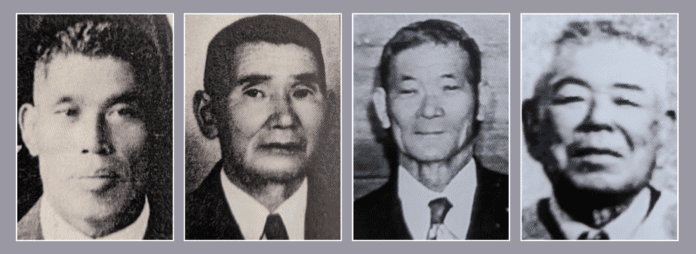
When four Japanese immigrants formed the Cortez Growers Association on April 18, 1924, electricity in the settlement was still a year away. It would be another three years before movies started to “talk,” and another four before penicillin would be discovered.
This year, Cortez Growers Association (CGA), which now represents more than 200 almond growers, celebrates its 100th anniversary, a significant milestone for any organization but even more so for one whose original membership survived years of blatant discrimination and whose membership suffered internment during World War II.
The story of CGA’s survival and success is directly attributable to its core value of always doing what’s best for the growers it serves.
“The origin made it different,” said general manager Dave Thiel. “It was a necessity for these immigrants to band together to make it. They really weren’t welcome, and they weren’t wanted. They had to band together in order to chase the American dream, which they had every right to do. From that moment, the tone of the co-op was set, and I don’t think we’ve ever departed from it.
“We’re very much member-oriented and a tight, close-knit community, and it hasn’t strayed from that mantra from the beginning.”
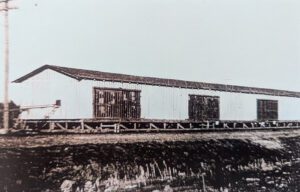
Immigrants Band Together
In April 1924, four Japanese immigrant families decided to work together to market their grapes and fruit. The original members (Nenokichi Morofuji, Seitaro Yoneyama, Yonekichi Kuwahara and Zenshiro Yuge) were actually barred from owning land in California. The California Alien Land Law of 1913 prohibited “aliens ineligible for citizenship” from purchasing land but did allow them to procure short-term (one- to three-year) leases.
The four founding members of CGA used corporations to purchase the land, and the founding documents of CGA list those corporations as its members, not the individuals behind them.
Within a year, the co-op grew to 11 members, all Japanese immigrants, and constructed a packinghouse on land leased from the Atchison, Topeka and Santa Fe Railway for $757.
Over time, growers diversified into row crops and berries as grapes became less profitable. In April 1932, Sam Kuwahara became the first full-time manager of the co-op.
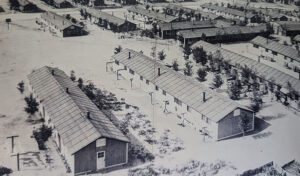
War Brings Internment
When the Japanese bombs dropped on Pearl Harbor on Dec. 7, 1941, it sent shockwaves throughout the world, but no one would be more affected by that day than those of Japanese descent living on the west coast.
With the U.S. preparing for war and anti-Japanese sentiment rising, the co-op membership met and elected a board made up, for the first time, of entirely American citizens. To protect the co-op, those with “alien” status were asked to withdraw their membership in favor of a joint custodial agreement. Two weeks later on Feb. 19, 1942, President Roosevelt issued Executive Order 9066, which ordered that all Japanese aliens and American citizens with Japanese heritage be removed from the west coast.
“Cortez Growers, as a co-op, formed a trust that took the land that was in ownership, and the members of Cortez Growers that wanted to put their land in this trust where it would be taken care of,” said co-op member Galen Miyamoto, whose grandfather was among the early members of CGA. “When the farmers were relocated, and in this case, I think the majority went to Amache War Relocation Center in Granada in Colorado, there was a trust put together by Hugh Griswold, an attorney in Merced, Calif. Griswold hired Gus Momberg as a farm manager to manage the land within the trust. Momberg was an experienced farm manager, having worked for Bank of America during the Depression. So, they managed the farms in Cortez for three and a half years while the farmers were in the relocation camps. That allowed [the farmers] to come back to at least land. The equipment was pretty much worn out, most of the personal property was gone, but there was still land that they could come back and start farming again. And that was because Cortez put the trust together.”
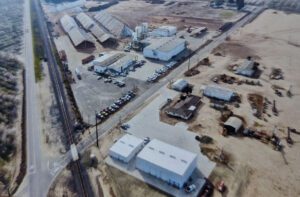
Serving with Distinction
Despite their own country stripping them of their homes and livelihoods, many young men from CGA in the internment camps chose to serve in the U.S. military as part of the 442nd Regimental Combat Team, a segregated unit made up of Japanese Americans.
“They volunteered,” Miyamoto said. “My father volunteered. I think all the young Nissei, second generation Japanese Americans, volunteered to be in this army service. Their motto was “Go for Broke.” Their parents were in concentration camps, and they’re fighting the war.”
The 442nd Regimental Combat Team participated in the invasion of southern France, liberating French cities. They later drove German forces out of northern Italy in coordination with 92nd Infantry Division, a segregated black unit.
The 442nd went on to become the most decorated unit for its size and length of service. Despite the racism and hardship they faced at home, the men of the 442nd, including Nissei from CGA, earned more than 4,000 Purple Hearts, 4,000 Bronze Stars, 560 Silver Star Medals, 21 Medals of Honor and seven Presidential Unit Citations.
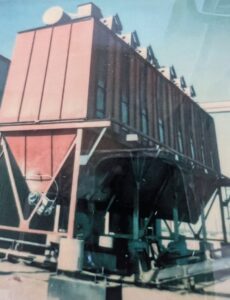
Returning Home
After the war, members of the co-op returned home, rebuilt their lives and began farming the land again, switching from less-profitable row crops to peaches, wine grapes, almonds and walnuts. The co-op began to accept non-Japanese members as its reputation for serving the needs of its growers through offering farm supplies, helping recruit labor and providing harvesting services began to grow.
Those harvesting services were, and still are, a big help to small growers.
“Many joined the co-op to share equipment costs,” said Dennis Yotsuya, a co-op member whose grandfather was also an early member of the co-op. “Each small farmer couldn’t afford the equipment, so they formed a co-op to buy more expensive pieces of equipment and harvested for member growers.”
That tradition continues today with CGA still harvesting 3,000 acres of member-grown almonds.
Moving into Nuts
While the co-op focused primarily on fruits, row crops and other vegetables in its first 20 years, by 1946, many of its members were focusing on almonds, producing 35 tons of the nuts that year. The co-op built a huller and began helping with harvest using mechanized knockers. By 1953, the co-op and its members engaged in bulk harvesting well before the rest of the almond industry.
In addition, growers were increasing their walnut acreage and benefited from access to the harvesting services offered by CGA. Walnut growers could also belong to the walnut pool to access timely payment for their crop.
In 1959, CGA was once again at the front of innovation with a new dust control system to reduce the dust created by the hulling operation.
Since the 1950s, CGA has continued to grow and add members while investing in new technologies to continue to help its growers produce the best almonds at an affordable price.
In the late 1980s and early 1990s, the co-op invested heavily into infrastructure to help its members, including a new huller/sheller plant, an in-hull dryer and an almond meat dryer. CGA also began offering PCA services, including office hours with PCA Gary Gliddon. These evolved into the co-op’s current “Wednesday Morning Meetings” with growers that include speakers on topics relevant to growing almonds in today’s environment.
The Need to Grow
As the co-op entered the early 2000s, it became apparent that it would need to grow both in membership and in capacity.
We haven’t been a very large co-op for a very long time,” Thiel said. “In 2005, the board and management recognized we needed to expand, or we were going to get left behind.
“We had to do some repairs on the plant itself, and by the time we looked at the regulations that we would have to meet with the air board here in California, we decided that if we’re going to have to spend that much money on just the air, we might as well take the big leap and revamp the whole plant.”
CGA expanded the plant from a capacity of 10 million pounds to one that could handle at least 25 million pounds.
“We thought it would take us about five to six years to fill the volume and get more members and more acres,” he said. “Because the profitability in almond hulling and shelling is in volume. We went from 6 million pounds in ’04 to 24 million pounds in three years instead of five.”
With some other modifications and additions in the years since, the CGA plant now processes an average of 40 million pounds of almonds a year.
Membership also grew in those years.
“The co-op started with 13 or 14 original families then grew to 30 families or so,” Yotsuya said. “At the 75-year reunion, they were still primarily descendants of original families. Now we have over 200 members, and only five or six are descendants of the original families.”
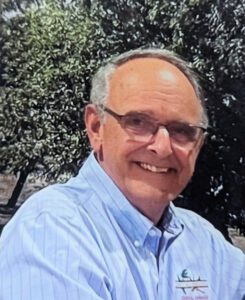
A Legacy of Helping Growers
Despite that growth, CGA remains focused on helping growers.
“We still have smaller growers,” Yotsuya said. “Most of them 40 acres or less. When we expanded the co-op, we got more larger growers that expanded that volume. We started expansion in the early 2000s. Larger growers harvest their own crops, but the co-op still provides services. Cortez harvests 20,000 acres, and CGA still harvests 3,000 of those acres.”
As CGA looks ahead to the next century, it plans to keep its members at the center of its mission.
“I’ve been involved in ag my whole life,” Thiel said. “I would say this co-op is unique in many ways. The difference between other co-ops and here is it is so involved with its membership. It is more involved than any place I’ve ever known. We have meetings every Wednesday morning. We offer more services than hulling and shelling. We offer propane for the home. We have a grower savings account. It’s very involved in the day-to-day operations of our membership.”
None of that happens without a great staff.
“If it wasn’t for the staff that Cortez Growers has had over the last 100 years, we couldn’t have done what we’ve done,” Miyamoto said. “We recognized seven employees who retired from Cortez Growers Association, and within those seven retirees, they accounted for 199 years of service.
“That’s the reason [CGA] is still in existence today. If we didn’t have a strong staff that can run this association and run the equipment and do the management and look forward, then we wouldn’t be in existence today. We’re looking forward to another 100 years because if you get the right people on the team, they can do some really fantastic things.”
Even as it looks forward, CGA took a moment to celebrate its century anniversary as part of its annual dinner.
“We didn’t have a big circus or anything like that,” Thiel said. “We’re not that flashy. We like things simple. But we do recognize the achievement and the rarity of a co-op or a business to survive through these years, and especially this co-op with its history of the Japanese immigrants to survive the war years. Getting through that was pretty amazing.”















